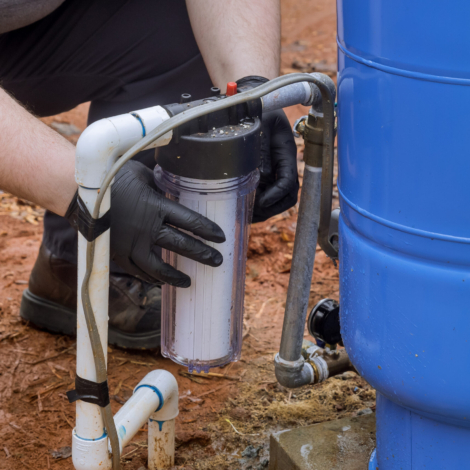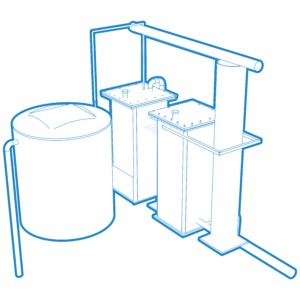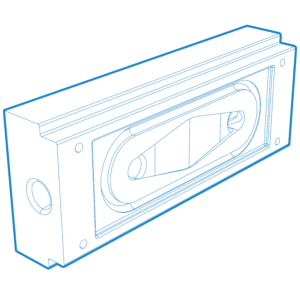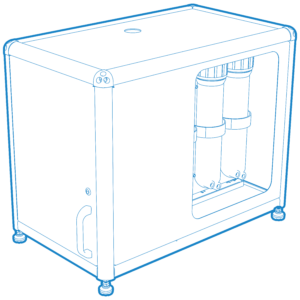While studying for a Master’s of Public Health program, I repeatedly heard the question, “You’re an engineer, how is that related to public health?” The answer was clear to me from the beginning because of the projects in which I was involved, including fellowships with Engineering for Change. The fields are connected in many ways, and the engineers and public health practitioners who understand this, and work together, are well poised to address some of our world’s most pressing challenges.
In the summer of 2025, I had the opportunity to virtually attend the American Society of Mechanical Engineers ISHOW Americas sessions. I saw products and ventures at ISHOW that exemplify some of the numerous connections between public health and engineering.
ISHOW featured medical technologies, which represent a clear overlap between engineering and public health. One was Billiroo, a device designed to treat jaundice while facilitating kangaroo care. It employs engineering design tactics to treat a critical health need, which is more likely to go untreated in areas with fragile public health infrastructures.
- Clariwash
- SchistoFilter
Another ISHOW device that merges the two fields comes from the Schistofilter team. Infectious diseases have long been a focus of public health, and one of them, schistosomiasis is a waterborne parasite that causes infection, as well as long term effects if left untreated. The Schistofilter team designed a urine filter to capture samples and a diagnostic tool based on the Foldoscope, a low-cost paper origami microscope that allow communities to test for schistosomiasis. Their product addresses a significant public health problem in Nigeria, where some of their team are based, as well as other parts of the globe.
The WASH (Water Sanitation and Hygiene) sector involves overlap between engineering and public health. Cycleau and Clariwash, both ISHOW finalists, address WASH.
Clariwash, designed by WaterReach, removes pathogens from the water supply, specifically aiming to prevent cholera, typhoid and diarrheal diseases, all of which have long been targets of the public health sector. Historically, cholera prevention is linked to the founding of modern public health practices.
Laero’s Cycleau is an under-the-sink graywater recycling system that can be installed as a retrofit. It is not designed to prevent transmission of a specific set of pathogens, but it incorporates features that filter out pathogens.
- RayaPod
- Cycleau
Rayapod was a finalist in the energy sector, a field that is not often associated with public health (but it should be). Rayapod demonstrates the connections between the two sectors. Raya supplies its users with solar energy technology to help lower their power bills, which could prevent outages due to cost barriers, and because Rayapod is solar, it can provide power in the wake of a natural disaster. While electricity itself is not a health outcome, research has shown that access to electricity has health impacts. For example, without access to social media or television individuals may not receive health advisories in a disaster. Outages may also reduce access to refrigeration, sanitation, and a person’s ability to prepare meals, all of which can negatively impact health.
These innovations demonstrate how technology can be useful in addressing public health challenges. There are more opportunities for the two fields to collaborate, learn from each other, and create solutions that support the UN’s Sustainable Development Goals (SDGs). It helps to remember that new and old technology is used by people. Public health and other interdisciplinary perspectives can aid engineers in developing tech that meets the needs of the community. I value my interdisciplinary education, and strongly recommend that path to other students. But my advice is not reserved for students, for practitioners it is also valuable to seek out learning experiences. For ventures, involving team members with training in a broad variety of disciplines can augment the mission to improve the quality of life for people and the planet.
About the Author
Helen is a researcher focusing on migration and public health, specifically at their intersection with technology. She is an alumna of the Engineering for Change Fellowship, holds an undergraduate degree in Mechanical Engineering from Boston University and a Master of Public Health from the University of North Carolina. She has previously worked in the medical device field and in global health research. Her work and study have taken her to Zanzibar, Tanzania and Beirut, Lebanon.





